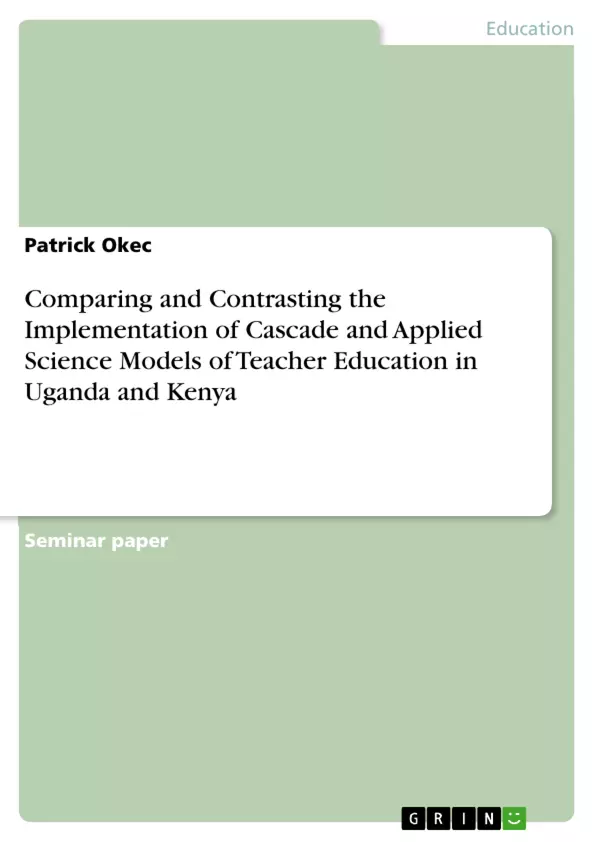This paper focuses on the cascade and applied science (University/College-based) models of teacher education. It will compare and contrast the implementation of the models in Uganda and Kenya and further discuss the effects and implications of the models at pre-service and continuous professional levels of teacher education.
Inhaltsverzeichnis (Table of Contents)
- Introduction
- The applied science models of teacher education
- The Cascade model of teacher education
- Comparison of why and how the cascade and the applied science models were chosen for use in Uganda (Bett, 2016; Ngeze et al., n.d.; Suzuki, n.d.)
- Differences
- Similarities
Zielsetzung und Themenschwerpunkte (Objectives and Key Themes)
This paper examines the cascade and applied science models of teacher education in Uganda and Kenya, comparing and contrasting their implementation and discussing their effects and implications at both pre-service and in-service levels.
- The characteristics and implementation of the cascade and applied science models of teacher education.
- The strengths and limitations of each model in terms of their impact on teacher development.
- The role of government, development partners, and other stakeholders in shaping teacher education models.
- The implications of these models for the quality of education in Uganda and Kenya.
Zusammenfassung der Kapitel (Chapter Summaries)
- Introduction: This chapter defines teacher education and discusses the role of models in achieving its goals. It introduces the cascade and applied science models as the focus of the paper.
- The applied science models of teacher education: This section describes the applied science model, where theoretical knowledge is acquired before practical experience in schools. It highlights the model's emphasis on university/college-based learning and its implementation in the American education system.
- The Cascade model of teacher education: This chapter outlines the cascade model, which emphasizes a top-down approach to training, with expert teachers transferring knowledge to other educators through workshops. It underscores the model's capacity for reaching large numbers of in-service teachers.
- Comparison of why and how the cascade and the applied science models were chosen for use in Uganda: This section delves into the rationale behind the selection of these models in Uganda, highlighting key differences and similarities between their implementation. The differences explore aspects such as training strategies, knowledge flow, and involvement of stakeholders. Similarities focus on the flow of information, structured programs, and the presence of objectives in both models.
Schlüsselwörter (Keywords)
This paper explores the key concepts of teacher education models, specifically the cascade and applied science models. It delves into the implementation, strengths, and limitations of these approaches, while examining the role of stakeholders and the implications for educational quality in Uganda and Kenya. The study utilizes a comparative framework to analyze the effectiveness of each model in preparing teachers for the challenges of contemporary classrooms.
- Quote paper
- Patrick Okec (Author), 2020, Comparing and Contrasting the Implementation of Cascade and Applied Science Models of Teacher Education in Uganda and Kenya, Munich, GRIN Verlag, https://www.grin.com/document/1352530



